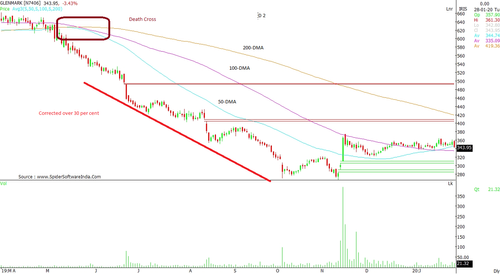What Are Moving Averages And How To Use Them To Make Money In Stocks
- 3m•
- 1,506•
- 17 Apr 2023
Moving Average is an indicator that helps avoid the uncertain price fluctuations. It acts as an instrument to smoothen the significance of the price to determine the trend. It does lag in some cases, however, the overall scenario helps define the direction.
The prime application of Moving Average is to find the direction of the trend, but it also identifies support and resistance levels. When co-related with other technical indicators like Relative Strength Index (RSI) and Moving Average Convergence Divergence (MACD), it provides assistance in gauging buy/sell signals.
From an arithmetic perspective, it calculates the mean of a security over a defined number of periods. The major moving averages are 50, 100, and 200, which are classified as short-term, medium-term, and long-term averages, respectively.
Moving average is mostly used with time series data to smooth out short-term fluctuations and highlight longer-term trends or cycles. In other words, traders and investors acknowledge moving averages as a tool to determine positive and negative trends. When an instrument trades above the moving average, the trend seems to be positive and vice versa. Also, when the moving averages makes a crossover, the trend sets to gain strong momentum.
Moving averages lag behind the current prices as they are based on historical data. Hence, the longer the time period for the moving average, the greater the lag. A 200-DMA will have a much greater degree of lag than a 20-DMA, as it will have the price action for the past 200 days.
The length of the moving average to use depends on the trading objectives. Shorter moving averages are used for short-term trading and longer-term moving averages more suited for long-term investors who wish to buy and hold on to a stock.
A positive crossover is named as a 'Golden Cross' and a negative crossover as a 'Death Cross'. As per the moving averages, when a security attains Golden Cross, a minimum of 10 per cent jump can be easily achieved. When these three moving averages (50,100,200) make a closer crossover, then the rally may even take the stock 20 per cent higher.
Golden Cross Stocks:
Bajaj Auto Ltd, DLF Ltd, Jubilant Foodworks Ltd, Max Financial Services Ltd., NMDC Ltd, Reliance Industries Ltd, Tata Chemicals Ltd.


Death Cross Stocks:
Aurobindo Pharma Ltd., Glenmark Pharmaceuticals Ltd.







